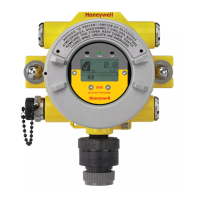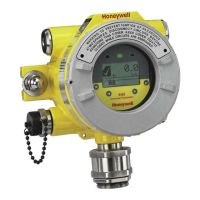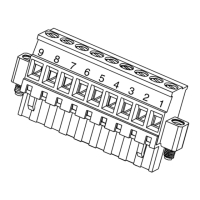XNX Universal Transmitter Quick Start Guide
18
The XNX Universal Transmitter power consumption is dependent on the sensor
and options for the specific configuration. For proper operation, the input voltage
must be maintained at 16 to 32 volts DC (for EC and mV transmitters) or 18 to 32
volts DC (for IR transmitters).
The table below defines the XNX typical and maximum power consumption
based on configuration:
Conguration Max Power Inrush
XNX EC 6.2 w <1A, <10ms@24VDC
XNX mV 6.5 w <750mA <2ms@24VDC
XNX IR (Optima) 9.7 w <1A <10ms@24VDC
XNX IR (Excel) 13.2 w <1A <10ms@24VDC
HART
®
devices can operate in one of two configurations: point-to-point or multi-
drop.
HART
®
Communications
Point-to-Point Mode
In point-to-point mode, the 4–20 mA analog output is used to report concentration
and the status of the transmitter to a dedicated channel of the control system.
Additionally, concentration, status, diagnostics, and configuration are available
digitally using the HART
®
protocol.
Multi-drop Mode
Multi-drop mode allows up to eight transmitters to interface with a single channel
of a control system for non-safety-critical applications.
NOTE:
Use a multi-drop connection for supervisory control installations that
are widely spaced such as pipelines, custody transfer stations, and tank
farms.
The minimum conductor size is 0.51mm diameter (#24 AWG) for cable runs less
than 1,524m (5,000 ft) and 0.81mm diameter (#20 AWG) for longer runs.
Cable Length
Most installations are within the 3,000m (10,000 ft) theoretical limit for HART
®
communication. However, the electrical characteristics of the cable (mostly
capacitance) and the combination of connected devices can affect the maximum
allowable cable length of a HART
®
network. The following table shows the effect
of cable capacitance and the number of network devices on cable length. The
table is based on typical installations of HART
®
devices in non-IS environments,
i.e. no miscellaneous series impedance.

